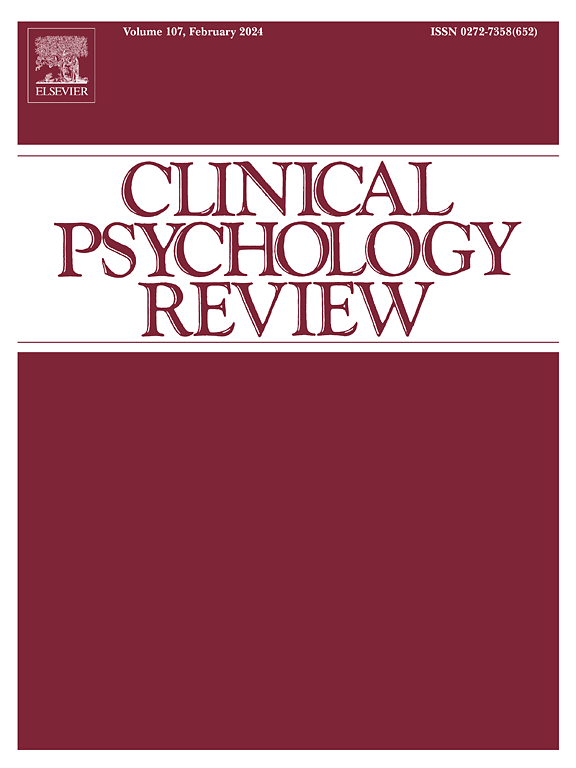Perceived need for treatment for mental disorders: A review and critical evaluation
IF 12.2
1区 心理学
Q1 PSYCHOLOGY, CLINICAL
引用次数: 0
Abstract
Mental disorders are highly prevalent worldwide. Unfortunately, most people with these disorders do not receive any treatment. This is due in part to a large set of barriers that impede treatment delivery. An initial barrier is the perception that one does not need treatment. Perceived need for treatment (PNFT) refers to whether an individual sees a need to obtain an intervention for their mental health problem. Among individuals with a mental disorder, lack of perceived need is the most common reason people give for not initiating treatment. This article describes PNFT, its characteristics, correlates, and predictors. A critical evaluation of the concept challenges key notions such as whether meeting criteria for a disorder means that someone needs treatment, whether PNFT actually is the initial obstacle limiting treatment seeking, how people may seek an intervention but do not elect mental health treatment, and that PNFT is neither a necessary nor a sufficient condition for entering treatment. Several research priorities are discussed including the importance of perceived need among parents and other caregivers, evaluating whether increasing the rates of PNFT would actually increase service use, the need to study the treatment needs of many neglected groups, and considering whether PNFT influences other facets of the treatment process (e.g., adherence to treatment, dropping out early) where perceiving there no longer is a mental health problem may occur.
精神障碍治疗的感知需求:回顾和批判性评价
精神障碍在世界范围内非常普遍。不幸的是,大多数患有这些疾病的人没有得到任何治疗。这在一定程度上是由于阻碍提供治疗的一系列障碍。最初的障碍是人们认为自己不需要治疗。感知治疗需求(PNFT)是指个体是否认为需要对其心理健康问题进行干预。在精神障碍患者中,缺乏感知需求是人们不开始治疗的最常见原因。本文描述了PNFT、它的特征、相关因素和预测因素。对这一概念的批判性评估挑战了一些关键概念,如符合疾病标准是否意味着某人需要治疗,PNFT是否实际上是限制寻求治疗的最初障碍,人们如何寻求干预但不选择心理健康治疗,以及PNFT既不是进入治疗的必要条件,也不是充分条件。讨论了几个研究重点,包括父母和其他照顾者感知需求的重要性,评估增加PNFT的比率是否实际上会增加服务的使用,研究许多被忽视群体的治疗需求的必要性,以及考虑PNFT是否影响治疗过程的其他方面(例如,坚持治疗,早期退出),在这些方面可能会出现不再存在心理健康问题的感觉。
本文章由计算机程序翻译,如有差异,请以英文原文为准。
求助全文
约1分钟内获得全文
求助全文
来源期刊

Clinical Psychology Review
PSYCHOLOGY, CLINICAL-
CiteScore
23.10
自引率
1.60%
发文量
65
期刊介绍:
Clinical Psychology Review serves as a platform for substantial reviews addressing pertinent topics in clinical psychology. Encompassing a spectrum of issues, from psychopathology to behavior therapy, cognition to cognitive therapies, behavioral medicine to community mental health, assessment, and child development, the journal seeks cutting-edge papers that significantly contribute to advancing the science and/or practice of clinical psychology.
While maintaining a primary focus on topics directly related to clinical psychology, the journal occasionally features reviews on psychophysiology, learning therapy, experimental psychopathology, and social psychology, provided they demonstrate a clear connection to research or practice in clinical psychology. Integrative literature reviews and summaries of innovative ongoing clinical research programs find a place within its pages. However, reports on individual research studies and theoretical treatises or clinical guides lacking an empirical base are deemed inappropriate for publication.
 求助内容:
求助内容: 应助结果提醒方式:
应助结果提醒方式:


